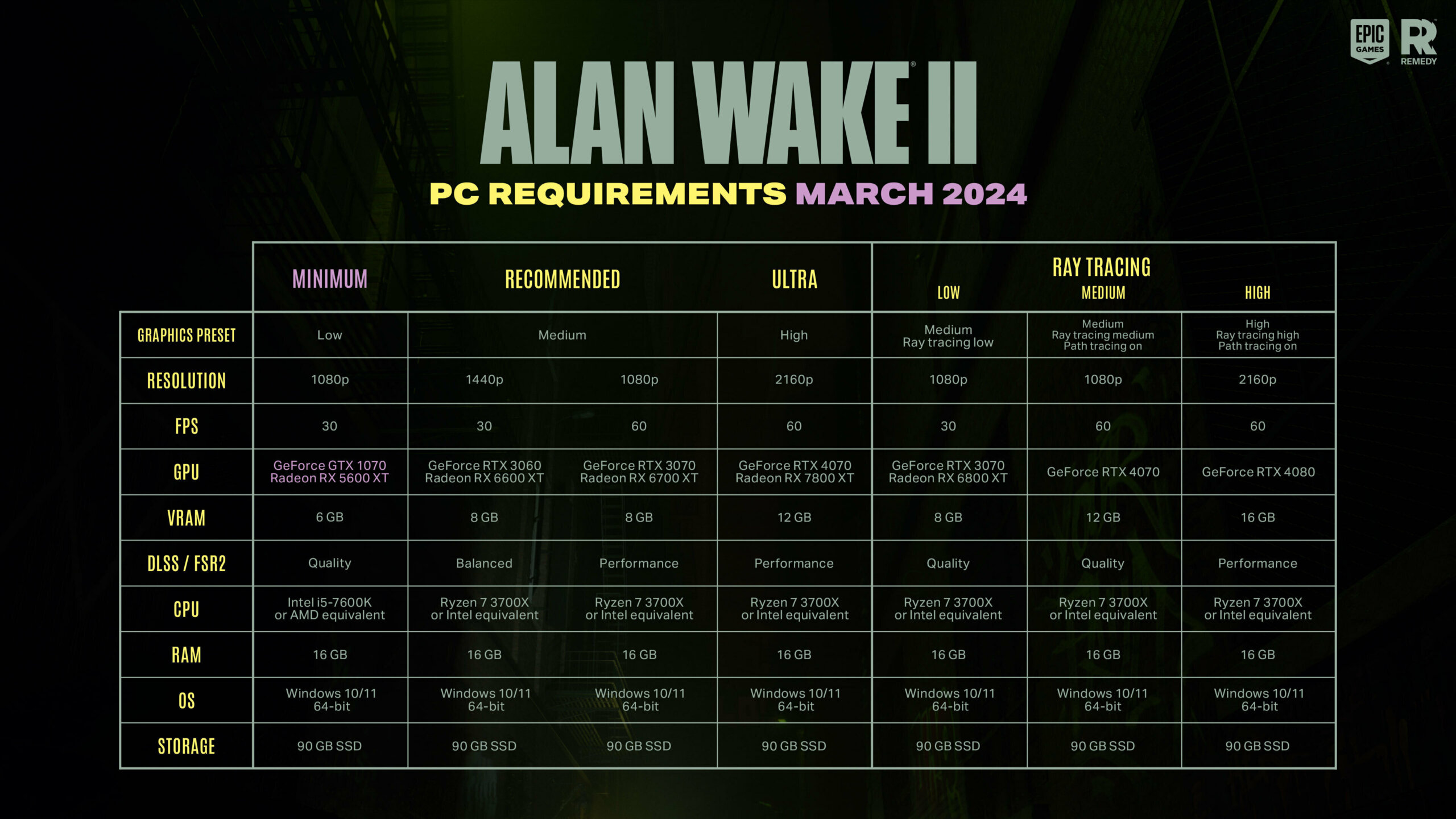- Alan Wake 2 ran poorly on older graphics cards last year due to mesh shader requirements.
- The developers have just released a new patch, bringing much-needed optimizations for older graphics cards like the GTX 1060.
- This patch has also resulted in lower PC system requirements.
Alan Wake 2 was one of last year’s most notable releases, selling 1.3 million units to become Remedy’s fastest-selling title. The game was arguably last year’s best-looking release but came with hefty system requirements.
Because of mesh shader support, it was nearly unplayable on older GTX 10 series graphics cards. However, Remedy’s latest patch addressed these issues, with the team announcing lower system requirements to reflect these changes.
Why it matters: This will allow the game to reach more players since the GTX 10 series is still quite popular on PC.

The official Twitter account of Alan Wake 2 has just shared the new PC requirements after the recent optimization improvements. Remedy has now optimized rendering for GPUs that don’t support mesh shaders.
Following the update, the minimum GPU requirements now include the GeForce GTX 1070 and Radeon RX 5600 XT. When the game was first launched last October, the minimum GPU requirements included the GeForce RTX 2060 and Radeon RX 6600.
While these graphics cards are still expected to offer a 1080/30FPS experience at 1080p, they could not come close to such figures before the patch. Overall, this update has been a significant improvement.
Digital Foundry notes that performance on the GTX 1070 went up by 57% after this patch. Similar or better gains were found when testing the GTX 1060 and GTX 1080, making Alan Wake 2 more playable on these graphics cards.
Meanwhile, more modern GPUs like the RTX 4070 also benefited from the latest patch. With a performance uplift of around 14%, Remedy has continued to push for better performance across the board.
While still quite intensive, ray tracing is now more viable than before. With small improvements to this part of the game, this title is overall better on PC than it was just a few days ago.
While mods already existed to help PC gamers deal with Alan Wake 2’s requirements, it is great to see a developer supporting the official release with such updates.
2023 was full of poor PC ports, and many raised fingers at Remedy for limiting its player base through such system requirements. If this patch proves anything, it’s the fact that Remedy values optimizations more than most teams.
Thank you! Please share your positive feedback. 🔋
How could we improve this post? Please Help us. 😔
[News Reporter]
Abiyan is on track to complete his Computer Science bachelor’s degree. His enthusiasm for writing and gaming motivates him to keep readers and gamers updated with the latest information from the industry. In his free time, Abiyan enjoys playing Dota 2 and Rocket League. Abiyan has also been cited in reputed websites such as Kitguru, Comicbook, GamingBible, Eurogamer and Gamingbolt.


 Threads
Threads

